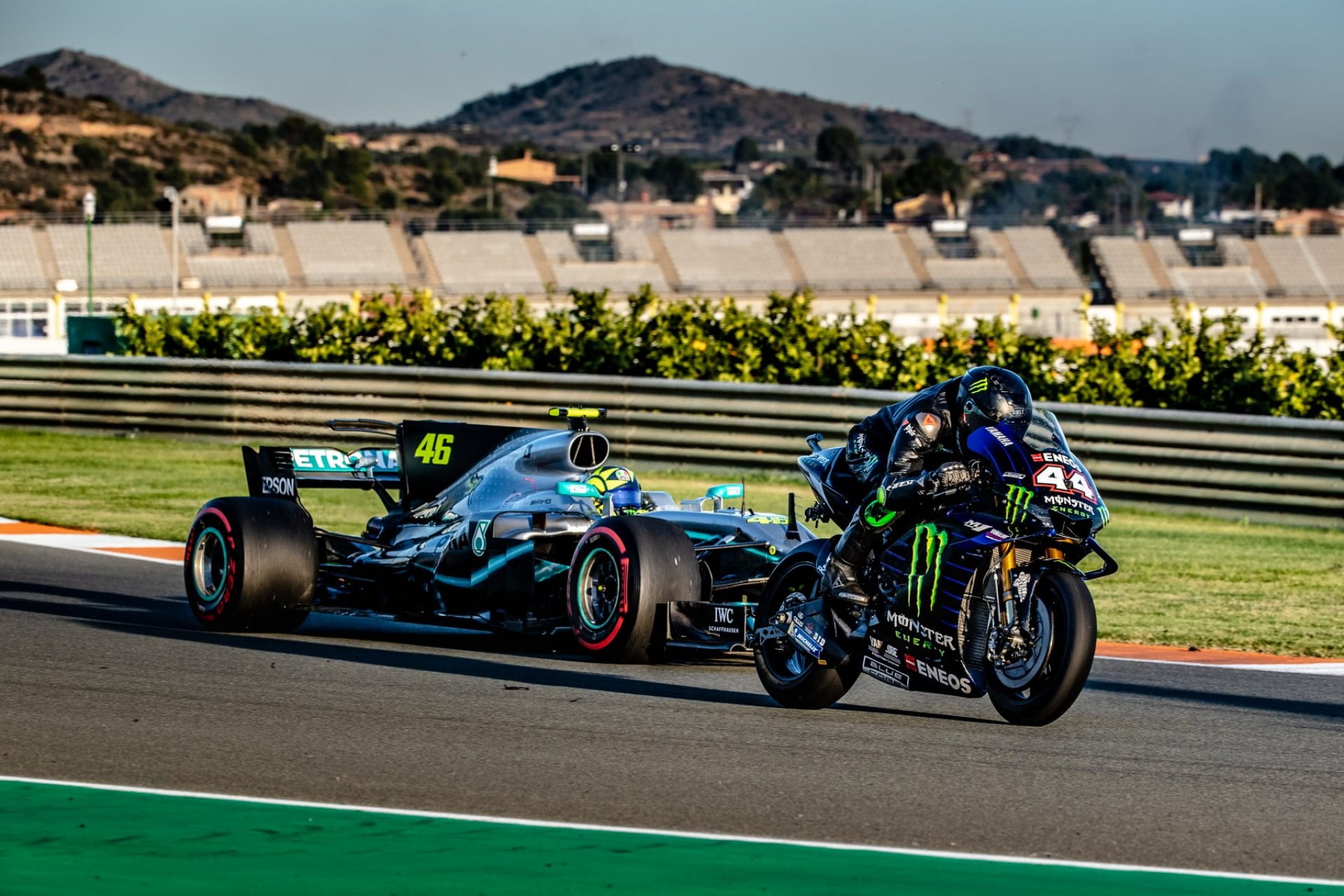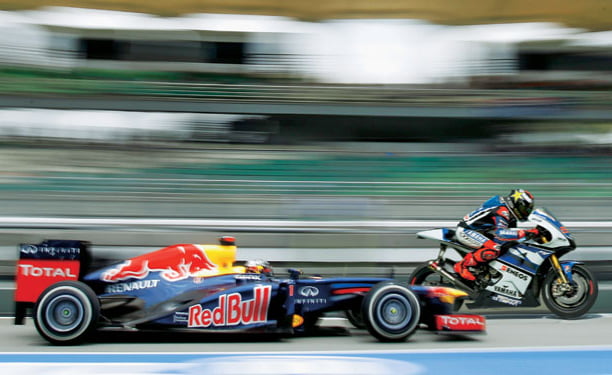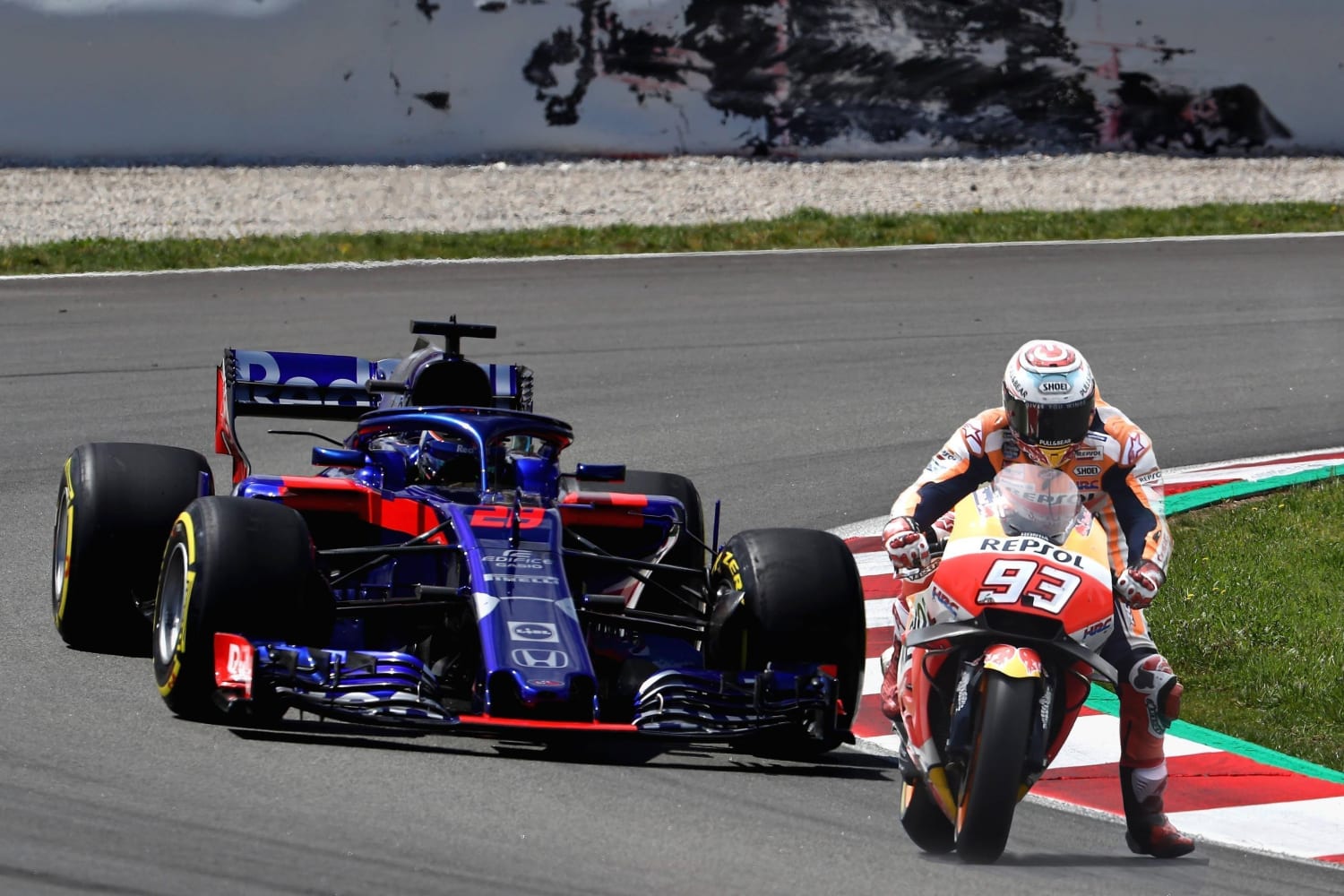This weekend took place the San Marino MotoGP race, but also the Tuscan F1 Grand Prix at Mugello. And for good reason, it was the opportunity for Ferrari to celebrate its 1000the Grand Prix on the circuit owned by the brand. This also allowed us to compare the times of the 2 categories. And they are final.
Indeed, it's a long-standing debate among motorsport aficionados. A MotoGP can accelerate very quickly, due to its favorable weight/power ratio, and reach unreasonable speeds but cannot compete with the aerodynamics, cornering speed and braking power of an F1 car.
Thus, at Mugello, while Marc Marquez achieved pole position in 2019 in 1'45.519, this year, Lewis Hamilton clocked 1,15.144. That's a little more than 30 seconds per lap gained, for a circuit that measures 5,245km. Impressive! But why such a difference in performance, knowing that MotoGP reaches 350km/h and F1 “only” 322km/h (once again for Lewis Hamilton)?
Acceleration
Measuring the acceleration of a machine by calculating the time it takes to go from 0 to 100 km/h lacks precision, because the power required makes it complicated to obtain good traction and thus know the speed reached by the machine. The car will start to slide and the motorcycle will not be able to keep the front wheel on the track. However, on this point, the two machines are comparable, reaching 100 km/h in around 2,6 seconds.
Between 0 and 200 km/h, on the other hand, the motorcycle is the best. Quite simply because the electronics of an F1 take control around 180 km/h, while a MotoGP rider can still open wide. Result: the motorcycle reaches its goal in 4,8 seconds, when the car requires 5,2. But it only needs 10,6 seconds to go from 0 to 300 km/h. Meanwhile, the motorcycle requires 11,8.
Average speed and top speed
There is no photo of that side. The average speed of F1 cars is 240 km/h on the Red Bull Ring, while that of motorcycles is 182 km/h. For example, Lando Norris completed the fastest lap of the Austrian Grand Prix this year in 1'07.475, even though Pol Espargaro, his MotoGP equivalent, needed 1'23.877 on the same track. . Why such a difference ? Because the surface area of F1 tires on the track is larger than MotoGP tires, and the cars rely on their aerodynamics to increase their speed.
However, in terms of top speed, still at the RedBullRing, Andrea Dovizioso, who signed the best top speed this year with 320,4 km/h, barely beats Antonio Giovinazzi and his 5 km/h. . At Mugello, the MotoGPs reach 325,3km/h and the F350s “only” 1km/h. Aerodynamic downforce has its limits!

Aero Dynamics
A MotoGP machine has two main problems: the bike is relatively small but cannot compete with the extremely sophisticated aerodynamics of an F1 car.
With its bigger tires and more sophisticated aerodynamics, a Formula 1 car can go around tight corners at high speed. For example, the turn after the straight at the Circuit Ricardo Tormo in Valencia. The single-seater goes from 312 to 240 km/h to pass it, while the motorcycle is forced to go from 327 to 115 km/h!
Moreover, in certain parts of the circuit, an F1 driver can only release the accelerator a little, while a MotoGP driver has to brake very hard.
Brake
Capable of generating a force of 5G, a single-seater is impregnable compared to a MotoGP and its 1,8G. In addition, the F1 is more stable thanks to a lower center of gravity and better traction while the rear wheel of a MotoGP leaves the tarmac during hard braking. The motorcycle must therefore brake 200 meters earlier and the driver must constantly use his body while the F1 body “just” operates the steering wheel and pedals.





